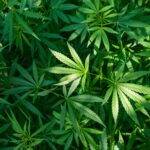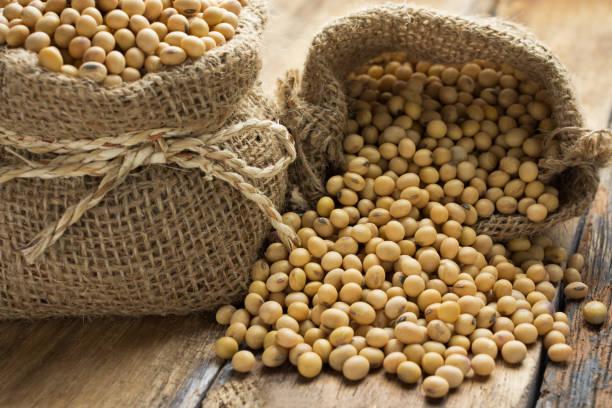Shilajit is an excellent ancient herb (or herbomineral,) with a host of health benefits. It is often used in the ancient practice of Ayurvedic medicine, a 5,000-year-old method of disease prevention and treatment originating in India and still practiced in many Asian countries. The foundation of Ayurvedic medicine is centered on the theory that by keeping equilibrium in the body’s three “doshas,” one can live a long and healthy life without relying on prescription medications. Mechanism of Action shilajit is high in fulvic acid and this accounts for its effectiveness. Fulvic acid is one component of humus. Humus is made of many organic compounds found in the Earth’s soils, rock sediments, and bodies of water. Fulvic acid is created by the gradual decomposition of certain plants and animals by the action of microorganisms. Fulvic acid has many proven benefits, from improving gut health to keeping skin healthy. Besides, Shilajit has different names, such as mineral pitch, mineral wax, black asphaltum, Asphaltum punjabianum (in Latin), shargai, dorobi, barahshin, baragshun, mumlai, brag zhun, chao-tong, wu ling zhi, baad-a-ghee, and arkhar-tash and mumiyo (variably transliterated as mumijo, mumio, momia, and moomiyo). It is a tar-like substance (known as a biomass) found in the Himalayan and Tibet Mountains. As lush forests were compacted as mountains arose, shilajit was formed. When the temperatures rise around these Indian mountains, this tar-like medical miracle substance oozes from crevices within the mountains. Ranging from yellowish-brown to pure black, the black variety is considered the most nutritional. Dr. Axe.com explained that over a decade ago, shilajit was mentioned in ancient Sanskrit texts. Known as “conqueror of mountains and destroyer of weakness,” it has been one of the staples of traditional medicine (and an aphrodisiac) in a variety of Asian countries for thousands of years(Agarwal et al. 2007). Now due to its impressive effect on diabetes, shilajit was added to an herbal supplement known as Diabecon. Besides, Meena et al.(2010) found shilajit to help decrease the side effects of high-altitude travel. People going from low to high altitude may find it works as a natural way of avoiding “altitude stress.” In this article, I explore the science behind shilajit in the Himalayan Mountains. Shilajit, Science It has been stated that shilajit, in pure form, contains about 85 different vitamins and minerals. A half-teaspoon serving of shilajit powder (approximately 1.2 grams) contains about: Calories: 3 Iron: 5.4 mg (30% DV) Selenium: 2.8 mcg (5% DV) Zinc: 0.45 mg (4% DV) Calcium: 40 mg (3% DV) Improves testosterone Testosterone is a primary male sex hormone, but some men have a lower level than others. Signs of low testosterone include: a low sex drive hair loss loss of muscle mass fatigue increased body fat In one clinical study( Pandit et al. 2016) involving male volunteers ages 45-55, half of the participants were given a placebo, and half were given a 250 milligram (mg) dose of purified shilajit twice a day. After 90 consecutive days, the study found that participants receiving purified shilajit had a significantly higher testosterone level compared to the placebo group. Energy and Revitalization For many years, Ayurvedic medicine practitioners have prescribed shilajit to boost energy and revitalize the body. For instance, in one study(Surapaneni et al. 2012) researchers gave lab rats shilajit for 21 days and then induced CFS by forcing the rats to swim 15 minutes for 21 consecutive days. The results found that shilajit helped reduce the effects of CFS. They think this was the result of the shilajit helping to prevent mitochondrial dysfunction. Chronic fatigue syndrome (CFS) is a long-term condition that causes extreme tiredness or fatigue. CFS can make it difficult to go to work or school, and simple everyday activities can prove challenging. Researchers think that shilajit supplements may reduce symptoms of CFS and restore energy. Based on these results, naturally boosting your body’s mitochondrial function with shilajit supplements may help improve energy levels. Mitochondria are organelles that serve as the “power source” of cells in the body because they convert oxygen and nutrients into adenosine triphosphate (ATP), the substance that powers body cells. Shilajit encourages the function of mitochondria, helping them oxygenate more efficiently. Besides that, Bhattacharyya et al.(2009) male Swiss albino mice study found that shilajit creates a powerful effect on mitochondrial oxygenation when taken together with CoQ10, an antioxidant naturally found in all human cells. Because shilajit increases the production of ATP, overall energy and stamina also increase. This makes it a good supplement to improve athletic performance( Stohs SJ. 2014). A previous study(Sharma et al. 2003) found shilajit to revitalize the body with its strong antioxidant properties. Support Brain Health A study (Aiello et al. 2011) found that shilajit is a “distinct and marked neuroprotective activity.” This appears that shilajit has a targeted mechanism for protecting brain cells in particular. In one animal study(Khaksari et al. 2013) in Iran conducted on the effects of shilajit on risk factors following a traumatic brain injury, the authors found that shilajit has positive effects on the three most indicative factors of death following traumatic brain injury: brain edema, blood-brain barrier permeability, and intracranial pressure. Another review(Carrasco-Gallardo et al. 2012) found that shilajit could be a novel treatment option for patients suffering from mild cases of Alzheimer’s disease. The presence of fulvic acid and a treatment protocol including administration with B vitamins have found promising results in pilot studies. In addition, shilajit (Carrasco-Gallardo et al. 2012) was found to show anti-epileptic properties and potentially antipsychotic effects, as it adjusts GABA (gamma-aminobutyric acid) levels (a naturally occurring acid in the brain) to normal. Hormones and Immune System Some studies have reported that shilajit regulates various body systems, such as the immune system and the balance of hormones. In one older study(Shibnath Ghosal, 1990), it was found that it has so much effect on the body because of the way it helps these systems remain in equilibrium. A recent human study (Pandit et al. 2015) found that shilajit supports reproductive hormone functions. In this study using healthy males, shilajit increases blood testosterone and encourages the production of sperm. In previous rats pilot studies(Park et al. 2006) shilajit was associated with ovulation in adult female rats, proving that shilajit powder or resin may be an agent to consider for those struggling with infertility. Pain Response Park et al.(2006) praised shilajit for its ability to reduce pain naturally. The study found that due to the interaction with GABA levels in the brain, shilajit has a massive effect on orofacial pain (pain of the face, mouth, or jaws), acting as a “sedating agent.” Another study by Park et al.(2015) on mice found it to relieve and lessen chronic pain over time, dependent on the size of the dose. A previous study(Tiwari et al. 2001) in mice, found that shilajit interacts positively with morphine, minimizing the buildup of tolerance to morphine and, therefore, reducing the amount of this medication that one in serious pain would need to introduce into his or her system for effective pain relief. Manage Diabetes An old study( Trivedi et al. 2004) in albino rats found that shilajit can help reduce blood glucose and lipids, especially when taken in conjunction with diabetes medications. Another older study(Mitra et al. 1996) found shilajit as the main ingredient in a supplement known as D-400, Diabecon, or GlucoCare. This supplement is designed to combine the most powerful Ayurvedic natural treatments into one pill. D-400 reduces blood glucose levels and shows potential to repair damage to the pancreas caused by diabetes. Prevent and Protect from Cancer Studies have found shilajit to be toxic to different types of cancers, such as lung, breast, colon, ovarian, and liver cancer. One such study ( Phaechamud et al. 2008) linked this to its toxicity to these cancers to the presence and combination of heavy metals in the substance, making it a potential natural cancer treatment. Apart from that, one study by Kececi et al. (2016) found shilajit to protect certain body systems from dangerous radiation damage such as ovaries in an animal study. Inflammation and Viruses An old study(Goel et al. 1990) suggests that shilajit can be effective in healing and preventing gastric ulcers and reducing the inflammation related to them. A recent study(Ghasemkhani et al. 2021) found that it helped alleviate gastric lesions in rats. Dr. Axe.com also reports that shilajit helps alleviate inflammation, due to its specific” antiviral herb properties. One Italian lab study( Cagno et al. 2015) found that it has massive antiviral activity against several herpes-related viruses and HRSV, a virus that causes respiratory tract infections, especially in children. Skeletal Health One clinical study(Das et al. 2016) found that shilajit improves the health of the skeletal system. In this study, obese patients were given shilajit, which significantly improved the function and regeneration of skeletal muscles. Good for the Heart and Blood One study(Das et al. 2016) found shilajit to protect the heart against damage resulting from drug-induced injury due to the antioxidant contents. This study was conducted on rats and found that the rats given shilajit had less lasting damage visible on the heart. The same study also found that shilajit can help, in certain doses, regulate heart rate. In smaller doses, it may lower a speeding heart rate. However, in large doses, it may have the opposite effect. Aids in Breaking Addictions Das et al.(2016) also reported that shilajit can interact with other drug substances, and this gives it a huge effect on the process of breaking addiction. When given to patients coming down from opioids, it reduces the actual addiction and minimizes withdrawal symptoms, better in many cases than common medications given to break dependence. The same applies to those battling with alcohol addiction as it helps them to stop drinking. Warnings Two well-known possible drawbacks include the presence of heavy metals and the ability of large doses to adversely affect blood pressure. If you’re at risk for heavy metal exposure or abnormally low blood pressure, you should be cautious when taking it. Don’t take shilajit if you have sickle cell anemia, hemochromatosis (too much iron in your blood), or thalassemia. It’s possible to be allergic to this supplement. Stop taking Shilajit if you develop a rash, increased heart rate, or dizziness. It’s also very important to get this substance from a trusted source such as Nyarkotey Herbal Mall, at Amrahia-Dodowa Road, behind a potbelly restaurant. This is because unfiltered shilajit may contain certain dangerous fungi, and this is part of where the problems with heavy metals come in. Take Home Preliminary research has found it to be effective in relieving fatigue, promoting the health of the brain, supporting the immune system, relieving pain, managing diabetes, protecting from certain cancers, preventing inflammation and viral infections, improving skeletal system health, protecting the heart, and assisting in breaking an addiction to harmful substances. Used in conjunction with other popular Ayurvedic herbs, shilajit can be a powerful supplement for almost anyone to use to improve overall health.
This content was originally published here.





















